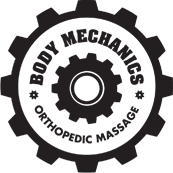How Prenatal Massage Helps Relieve Lower Back Pain During Pregnancy
Pregnancy is a beautiful and transformative journey, but it often comes with its fair share of discomfort, especially in the lower back. As your body adapts to carry your baby, the strain on your muscles and joints can lead to persistent lower back pain, a common issue for many pregnant women. Fortunately, prenatal massage offers a safe and effective solution to help alleviate this discomfort. This guide will explore how prenatal massage specifically targets lower back pain and how regular sessions can provide much-needed relief throughout your pregnancy.
Why Lower Back Pain Happens During Pregnancy
Lower back pain is one of the most common complaints during pregnancy, affecting up to 70% of expectant mothers. The causes are often linked to the body’s natural changes as it prepares for childbirth. Hormonal shifts, particularly the release of relaxin, loosen the ligaments and joints in the pelvis, leading to instability and pain. As the baby grows, your center of gravity shifts, causing posture changes that strain the lower back muscles.
By the second and third trimesters, many women experience significant discomfort in this area, making day-to-day activities challenging. Most women opt for massages during the first trimester too and it’s completely safe to have massages in the first trimester of pregnancy. This is where prenatal massage comes into play, offering a non-invasive way to reduce pain and improve mobility.
How Prenatal Massage Targets Lower Back Pain
Prenatal massage is specially designed to address the physical changes and discomforts that come with pregnancy, particularly lower back pain. Through targeted techniques, such as Swedish massage and myofascial release, therapists can alleviate muscle tension and improve blood circulation in the affected areas.
- Muscle Tension Relief: During pregnancy, the added weight of the baby can cause muscles in the lower back to become tight and inflamed. A prenatal massage focuses on these muscles, using gentle kneading to release tension and promote relaxation.
- Reduce Stress: Your stress level is directly related to how much pain and discomfort you feel. Managing your stress regularly can help you feel less pain less often.
- Improve Your Rest: When you sleep and rest you hit the reset button. Sleep is an important part of recovery from whatever your body is experiencing. By optimizing your sleep and practicing relaxation, you can make sure you are recovering properly and experiencing less pain and stress.
The Benefits of Regular Prenatal Massage Sessions
Prenatal massages are a gentle embrace for expectant mothers. While a single massage can provide immediate relief, regular sessions offer long-term benefits for managing lower back pain throughout pregnancy. As the pregnancy progresses, muscles tend to become tighter, and lower back pain can worsen without proper care. Establishing a routine of consistent prenatal massages helps to maintain muscle flexibility, reduce chronic discomfort, and improve overall well-being. Moreover, prenatal massage supports the release of endorphins—the body’s natural painkillers. Regular sessions not only alleviate physical pain but also enhance mental and emotional relaxation, contributing to a more comfortable pregnancy.
Tips for Finding a Qualified Prenatal Massage Therapist
Not all massage therapists are trained in prenatal care, so it’s important to find one who specializes in working with pregnant women. Here are a few tips for finding a certified prenatal massage therapist:
- Certification and Training: Ensure that the therapist is licensed and certified in prenatal massage techniques. These professionals understand the unique needs of pregnant women and can provide safe, effective treatment.
- Experience with Pregnancy-Specific Conditions: Choose a therapist who has experience addressing common pregnancy ailments like lower back pain, swelling, and sciatic nerve pain.
- Comfort and Safety: During your session, make sure the therapist uses appropriate positioning, such as side-lying positions with pillows for support, to ensure your safety and comfort.
Prenatal Massage Techniques for Lower Back Pain Relief
While there are other simple ways to manage lower body pain during pregnancy, a variety of massage techniques can be used to relieve lower back pain, depending on your specific needs. Here are some of the most effective ones:
- Swedish Massage: This gentle technique uses long, flowing strokes to relax muscles and improve circulation. It’s ideal for easing general discomfort and promoting relaxation.
- Myofascial Release: This technique focuses on relieving tension in the connective tissues (fascia) that surround muscles. It’s particularly effective for targeting deep-seated lower back pain.
- Trigger Point Therapy: If your lower back pain is caused by specific tight spots, or “knots,” trigger point therapy can help by applying pressure to these areas and releasing the tension.
How to Integrate Prenatal Massage into Your Routine
Prenatal massage can be a wonderful addition to your self-care routine during pregnancy. Many women find that getting a massage once or twice a month is enough to manage their lower back pain, while others may need weekly sessions, especially in the later stages of pregnancy. Here are a few tips for incorporating prenatal massage into your schedule:
- Listen to Your Body: If your back pain worsens or you’re feeling particularly stressed, consider scheduling a massage session. Regular treatments can help maintain a baseline level of comfort.
- Combine with Other Therapies: Prenatal yoga, gentle stretching, and regular exercise can complement your massage sessions, further helping to reduce lower back pain.
The Science Behind Prenatal Massage and Pain Relief
The benefits of prenatal massage go beyond just physical relief; there’s scientific evidence to support its effectiveness. Research shows that massage therapy can significantly reduce back pain, leg pain, and even anxiety in pregnant women. Getting regular massages during pregnancy not only helps in fighting lower back pain but massages also help reduce anxiety and depression in women during these difficult times. By promoting relaxation and reducing muscle tension, massage helps release endorphins—natural painkillers that improve mood and decrease the perception of pain.
Other Health Benefits of Prenatal Massage Beyond Back Pain
In addition to relieving lower back pain, prenatal massage offers a variety of other health benefits:
-
- Reduced Swelling: Pregnancy often causes swelling in the legs and feet, and massage can help promote lymphatic drainage, reducing fluid retention. During this time, ankle massages can help release a lot of body tension.
- Improved Mobility: When you are in pain you tend not to move as well, so managing your pain regularly can help make sure you are moving and living your best life.
- Improved Mental Health- Self-care is an essential part of wellness. Take care of your body and take care of yourself.
Safety Considerations for Prenatal Massage
While prenatal massage is generally safe, there are a few things to keep in mind. It’s always important to consult with your healthcare provider before starting massage therapy, especially if you have a high-risk pregnancy or certain health conditions.
Frequently Asked Questions:
- Is prenatal massage safe for relieving lower back pain during pregnancy?
Yes, prenatal massage is generally safe when performed by a certified and trained massage therapist who specializes in prenatal care. It’s always a good idea to consult with your healthcare provider before starting any new treatments, especially if you have a high-risk pregnancy or other health concerns. - How often should I get a prenatal massage to relieve lower back pain?
The frequency of prenatal massages depends on your level of discomfort and individual needs. Many women find relief with bi-weekly or monthly sessions, while others may benefit from weekly massages, especially in the later stages of pregnancy. - What are the main benefits of prenatal massage for lower back pain?
Prenatal massage helps to reduce muscle tension and promote relaxation. It also stimulates the release of endorphins, which act as natural painkillers, providing significant relief for lower back pain. - Can I get a prenatal massage in the first trimester?
It is typically safe to get a prenatal massage during the first trimester as long as your therapist is trained in prenatal care. Always check with your doctor beforehand. - What should I expect during a prenatal massage session?
During a prenatal massage, you will likely lie on your side with pillows supporting your back and belly for comfort or face down at a special prenatal table. The massage therapist will use gentle, soothing strokes to relieve muscle tension, with a particular focus on areas prone to discomfort like the lower back, hips, and shoulders. - What techniques are used in prenatal massage to target lower back pain?
Common techniques include Swedish massage, which uses light to moderate pressure to relax muscles, and myofascial release, which targets deep tension in the connective tissues. Trigger point therapy may also be used to relieve specific areas of tightness. - Are there any risks or contraindications for prenatal massage?
While prenatal massage is safe for most women, there are a few contraindications. If you have a high-risk pregnancy, preeclampsia, deep vein thrombosis (DVT), or certain other medical conditions, consult your doctor before scheduling a massage. Deep pressure should also be avoided in certain areas, like the abdomen. - Can prenatal massage help with other pregnancy-related discomforts?
Yes! In addition to relieving lower back pain, prenatal massage can help reduce swelling, alleviate sciatic nerve pain, improve sleep quality, and decrease stress and anxiety. It can also promote overall relaxation and well-being during pregnancy. - How do I choose the right prenatal massage therapist?
Look for a certified massage therapist who has specialized training in prenatal massage. They should have experience working with pregnant women and understand how to safely position and massage you for comfort and effectiveness. Checking reviews and asking for recommendations from your healthcare provider can also help. - What other methods can complement prenatal massage for lower back pain?
Prenatal yoga, gentle stretching, swimming, and maintaining good posture can all complement prenatal massage in relieving lower back pain. Staying active, practicing relaxation techniques, and using supportive pillows when resting can also help manage discomfort.

